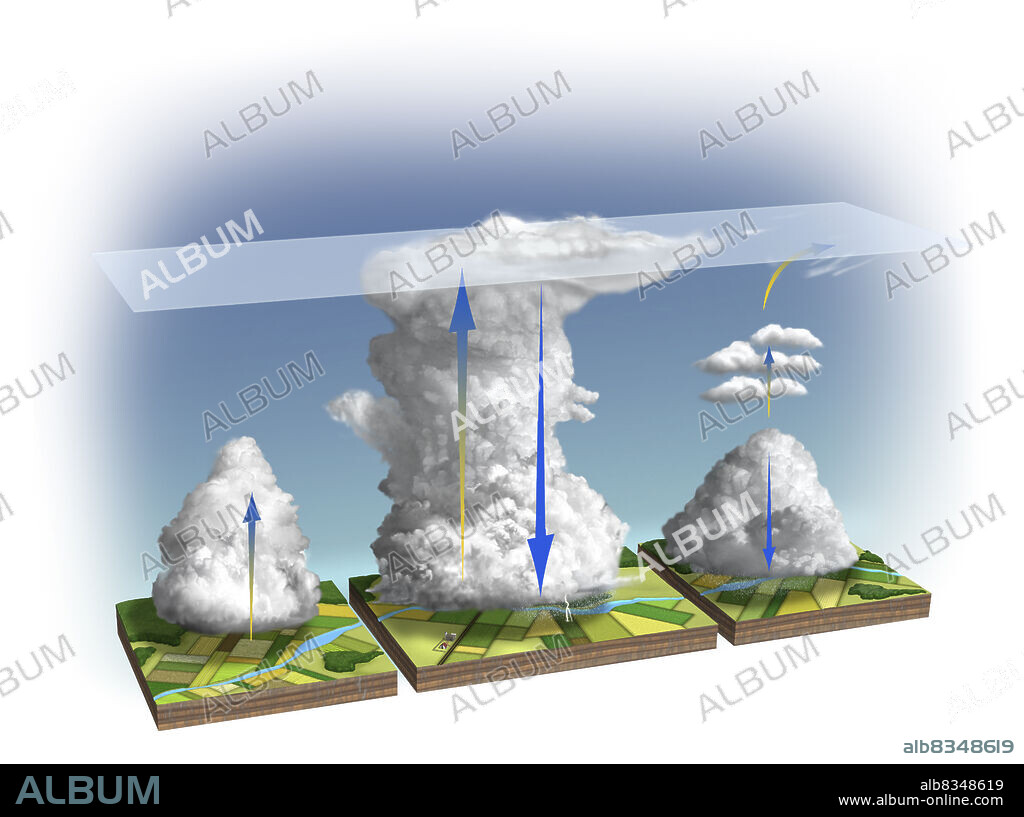alb8348619
The life cycle of a thunderstorm cell has three stages. In the development stage, the updraft of a humid air mass forms a cumulus cloud. If the air is unstable, warm currents continue to rise, and the cloud grows to the cumulonimbus stage. When it reaches the tropopause, the cloud stops developing in height and becomes loaded with ice crystals that begin the precipitation process. The thunderstorm then enters its maturity stage: the cold, heavy air from the top of the cloud suddenly falls in the form of strong currents accompanied by lightning and heavy showers. The thunderstorm dissipates when the winds from the top of the cloud cool the ground to the point where the cloud is deprived of the warm air that was feeding it. The cumulonimbus cloud disintegrates, the rain stops, and only a few inoffensive cirrus and altocumulus clouds remain in the sky.

|
Add to another lightbox |
|
Add to another lightbox |



Caption:
The life cycle of a thunderstorm cell has three stages. In the development stage, the updraft of a humid air mass forms a cumulus cloud. If the air is unstable, warm currents continue to rise, and the cloud grows to the cumulonimbus stage. When it reaches the tropopause, the cloud stops developing in height and becomes loaded with ice crystals that begin the precipitation process. The thunderstorm then enters its maturity stage: the cold, heavy air from the top of the cloud suddenly falls in the form of strong currents accompanied by lightning and heavy showers. The thunderstorm dissipates when the winds from the top of the cloud cool the ground to the point where the cloud is deprived of the warm air that was feeding it. The cumulonimbus cloud disintegrates, the rain stops, and only a few inoffensive cirrus and altocumulus clouds remain in the sky.
Credit:
Album / Universal Images Group
Releases:
Model: No - Property: No
Rights questions?
Rights questions?
Image size:
3420 x 2550 px | 25.0 MB
Print size:
29.0 x 21.6 cm | 11.4 x 8.5 in (300 dpi)
Keywords:
 Pinterest
Pinterest Twitter
Twitter Facebook
Facebook Copy link
Copy link Email
Email

